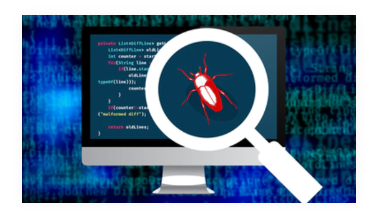Automated Software Testing: Unit Testing, Coverage Criteria and Design for Testability free videos and free material uploaded by Delft University of Technology Staff .
Topic 1: Automated software testing
Understand some basic principles of testing and whyit requires creativity.
Get familiar withsome testing vocabulary, which improves our communication.
Devise our first set of tests for a Java program and automatethese testsusing JUnit.
Understand the differences between unit, integration, and system testing, as well as the testing pyramid.
Topic 2: Functional testing
Learn how to read a requirement and derive the partitions, which are the actual concrete tests we will perform to make sure our system works (we call it "partitioning" and "equivalent partitioning").
Learn how to think about and test possible corner cases, as developersoften forget to deal with such cases (we call itboundary testing).
Get a few tips, based on experience, on common corner cases.
Topic 3: Structural testing and code coverage
Learn how to analyze the structure of your source code and derive meaningful tests.
Be able to use the most popular structural testing adequacy criteria, such as line coverage, branch coverage, and path coverage as well as to understand their differences.
Derive a minimal set of tests when your branches (e.g., ifs) are too complex.
Use a standard industry code coverage tool and interpret its results.
Topic 4: Testability and mock objects
Understand the differences between different test levels (e.g., unit, integration, and system tests)
Understand what makes a system more or less testable.
Propose refactoring opportunities for increasing testability.
Be able to apply mock objects in order to unit test a class.
Understand when not to apply mock objects and go for integration tests.
Topic 5 : Test code smells
Judge the internal code quality of your test suite and advice possible improvements.
Understand and avoid flaky tests.
Refactor and clean smelly test code.
Software testinggets a bad rap for being difficult, time-consuming, redundant, and above all - boring. But in fact, it is a proven way to ensure that your software will work flawlessly andcan meet release schedules.
In a two-course series, we will teach you automated software testing in an inspiring way. We will show you that testing is not as daunting a task as you might think, and how automated testing will make you a better developer who programs excellent software.
This first course will teach you specification-based testing, boundary testing, test adequacy and code coverage, unit vs system testing, mock objects, design for testability, and test code quality.
This is a highly practical course. Throughout the lessons, you will test various programs by means of different techniques. By the end, you will be able to choose the best testing strategies for different projects.
If you are or want to become a five-star software developer, QA engineer, or software tester, join this course. Testing will never be the same again!

- 0 Reviews
- 1 Students
- 101 Courses

Write a public review